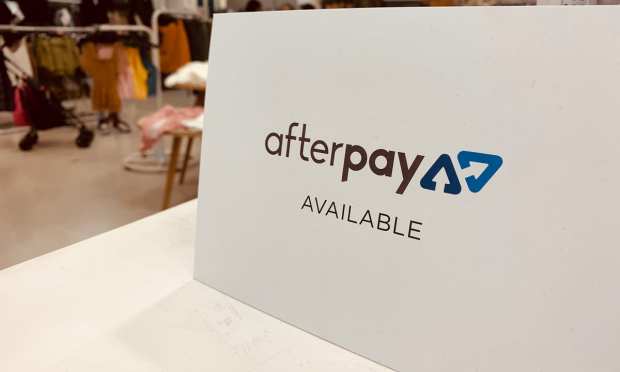Afterpay, New Entries Keep BNPL Sector Moving Forward

It was a good third financial Q3 for Australian buy now, pay later (BNPL) pioneer Afterpay, as confirmed when its North American earnings went out over the wires on Tuesday morning (April 20). Underlying sales were up 123 percent year on year in the quarter ending March 30, 2021 (Q3 FY21). Based on that performance, North America is now the largest contributor to underlying sales, and outperformed the seasonally strong Q2 FY21 on a local currency basis.
The firm further reported that active customers globally increased by 75 percent to 14.6 million (up from 8.4 million in Q3 FY20), with NA and the UK reaching 9.3 million and 1.8 million active customers, respectively. Customer acquisition, according to Afterpay, has continued to gain momentum in April, with ~6 percent of an increase in the daily average number of new customers in the month to date (April) compared to the Q3 FY21 average. Active merchants are also up, increasing by 77 percent to 85.8 thousand (up from 48.4 thousand in Q3 FY20).
Given the host of impressive stats Afterpay put up on Tuesday, the news this week that it is mulling a U.S. IPO doesn’t come as much of a surprise. A U.S. IPO, according to reports, would likely further open up the firm’s investor base and could potentially provide easier access to capital to fund expansion plans.
Afterpay Co-CEO Nick Molnar noted that the firm is considering the possibility, though it remains a “proud Australian-headquartered organization.”
“The prioritization on exploring a U.S. listing is purely around, does it provide the business more operating leverage from the perspective of being present in the market that is now the greatest contributing segment … and provide us the right investor base,” he said.
Consumer interest is undoubtedly exploding in North America and around the world. According to the latest edition of the PYMNTS Buy Now, Pay Later Tracker, the appeal of BNPL is particularly strong among younger shoppers, as 26 percent of millennial respondents reported using it for their eCommerce purchases.
BNPL is also apparently establishing a firm foothold in overall U.S. eCommerce, as 14 percent of shoppers used the method to finance their most recent purchases. The tool’s popularity also exceeded that of several other transaction methods, including gift cards and prepaid cards, which nearly 12 percent of February respondents used, and store cards, which 4 percent of shoppers used.
That increase, the survey notes, is particularly relevant as consumers digitally shift their shopping habits. However, they have not completely recreated their purchasing habits in favor of newer options, as BNPL solutions still share space with credit and debit card networks, both of which are far more established. Nearly 43 percent of February respondents used credit cards to finance their most recent online purchases, according to PYMNTS data, while debit card use also continued to outpace BNPL, as the former method was tapped by 31 percent of respondents. But BNPL is making headway among the up-and-coming generation of consumers currently entering their top earning and spending years.
Afterpay may have made the biggest news of the week, but it was far from the only news. BNPL firm Nelo snapped up $3 million to bring new payment options to the Mexican market. The company is already live with more than 45 merchants and over 150,000 users.
And “over the top” U.K. BNPL startup Zilch has raised $80 million in funding, bringing its value to more than $500 million as it prepares to expand to the U.S. Founder and CEO Philip Belamant said in an interview that the company is getting funding from individuals and smaller firms, but that could change in future rounds as it looks both to bring in a tier-one debt line, not just to fuel growth in its current market of the U.K., but also to expand to more countries, including the U.S.
According to PYMNTS data, consumers like what BNPL has to offer. The next interesting question the segment will have to answer is how players like Afterpay can continue to stand out when it seems everyone is looking to crowd into the BNPL pool — and what differentiation can innovators add to installment payments to distinguish them from the many other offerings in the market.
